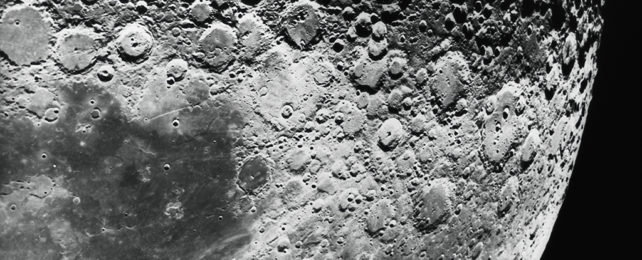Small, frozen, and silent, the Moon has a surprising distribution of magnetic fingerprints across its dusty surface, not all of which are easy to explain away.
A new study led by geoscientist Zhuang Guo of the Chinese Academy of Sciences' Institute of Geochemistry could help us better understand unusually strong magnetic field readings that don't fit with other characteristics of the Moon.
Guo's team analyzed lunar soil returned to Earth in December 2020 by the Chang'e 5 probe, uncovering particles of a mineral known as magnetite, which is rarely seen in samples of Moon dirt.
"Lunar magnetic anomalies have been a mystery since the Apollo era," write Guo and colleagues in their published paper.
"Therefore, an in-depth understanding of the formation mechanism and distribution characteristics of magnetite on the Moon could provide a new perspective to explain the genesis of magnetic anomalies in the lunar crust."
The magnetite, a strongly magnetic iron ore, was found in sub-microscopic spherical iron-sulfide grains that resemble molten droplets. Further thermodynamic modeling suggests that the magnetite in these grains is the result of large impacts on the lunar surface.
For planetary scientists, the presence of magnetite is crucial: it can be used to trace back magnetic fields through history, as well as spot potential indicators of life, two of the most important research discussions around any planet or moon.
Based on their findings, the researchers think that magnetite might be widely distributed in the finest lunar soil, too. Unexplained magnetic anomalies on the Moon might now be easier to understand if our modeling is adjusted to fit the conclusions of this new study.
Unlike soil on Earth, lunar regolith is extremely reduced, meaning it has an excess of electrons thanks to a constant bombardment of protons streaming from the Sun. This state makes it harder for iron to pair up with oxygen to form ores like they do down here.
That doesn't mean it can't happen. Tiny grains of magnetite have previously been found in Moon dust, but those studies proposed the magnetite formed at relatively low temperatures – and not under high-pressure, high-temperature conditions of an impactor slamming into the Moon's surface, as this new work suggests.
"The iron-sulfide grains' morphology features and the oxygen's distribution suggest that a gas–melt phase reaction occurred during large-impact events," the researchers explain.
Past research had suggested that meteorites could have injected ferromagnetic materials into the Moon's surface on impact, with the projectiles explaining at least some of the magnetic anomalies near impact sites.
This new study goes one step further, finding that the fury of those impacts might have also transformed materials into sub-microscopic magnetite, making them "an important source of ferromagnetic material on the lunar surface."
In other words, the findings suggest that the mineral is more widely present across the lunar surface, and that in turn changes our understanding of how the Moon has evolved over time.
The team suggests that the current magnetization of the Moon's surface, together with the presence of these minerals, can help to explain how large object impacts have led to a lunar magnetic field.
"These formation conditions result in a matching relationship between the magnetic anomaly distribution in the lunar crust and the distal ejecta of large impacts," the researchers conclude.
The research has been published in Nature Communications.
